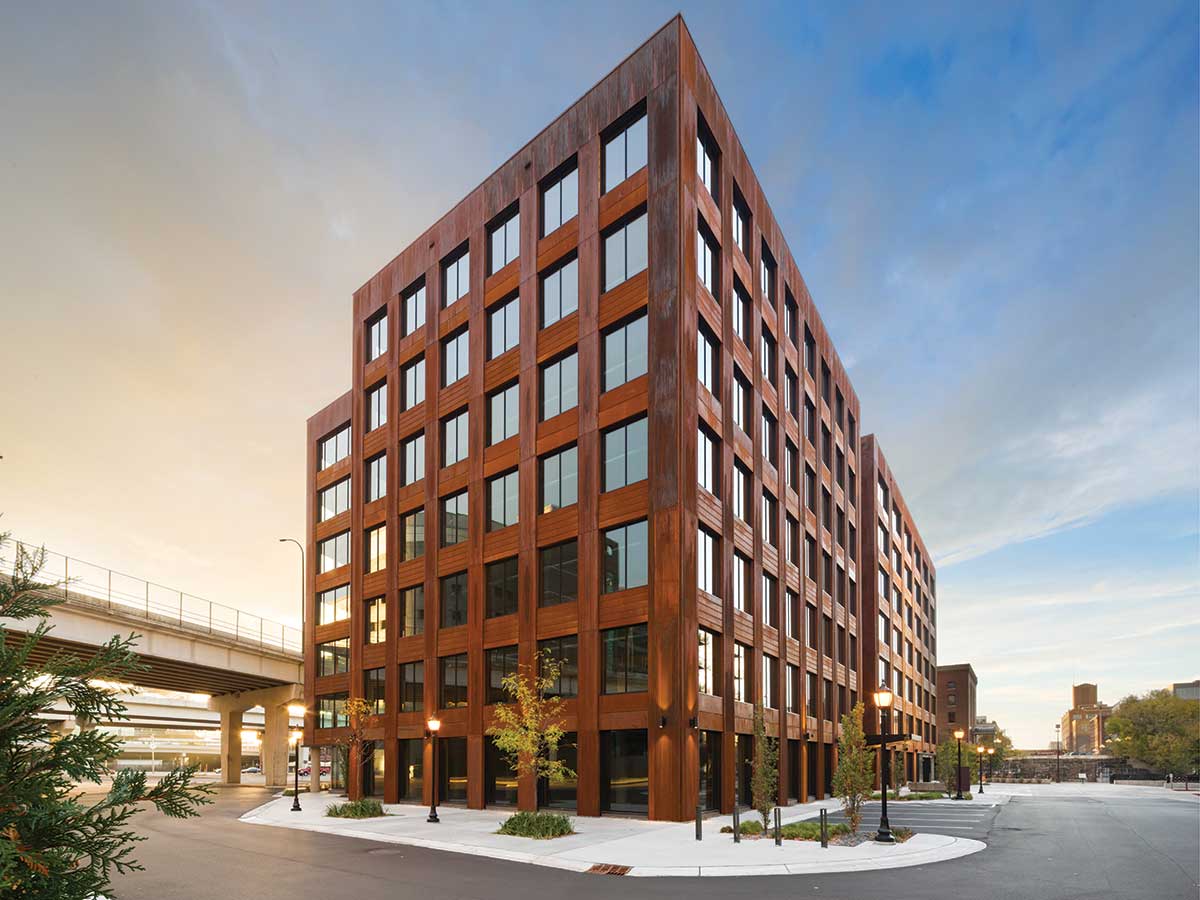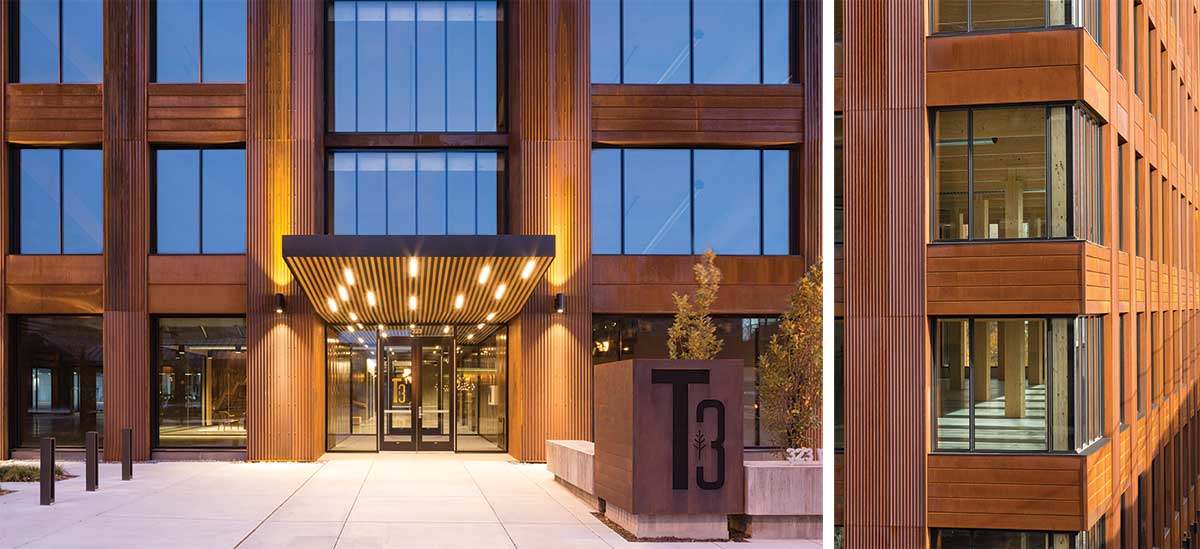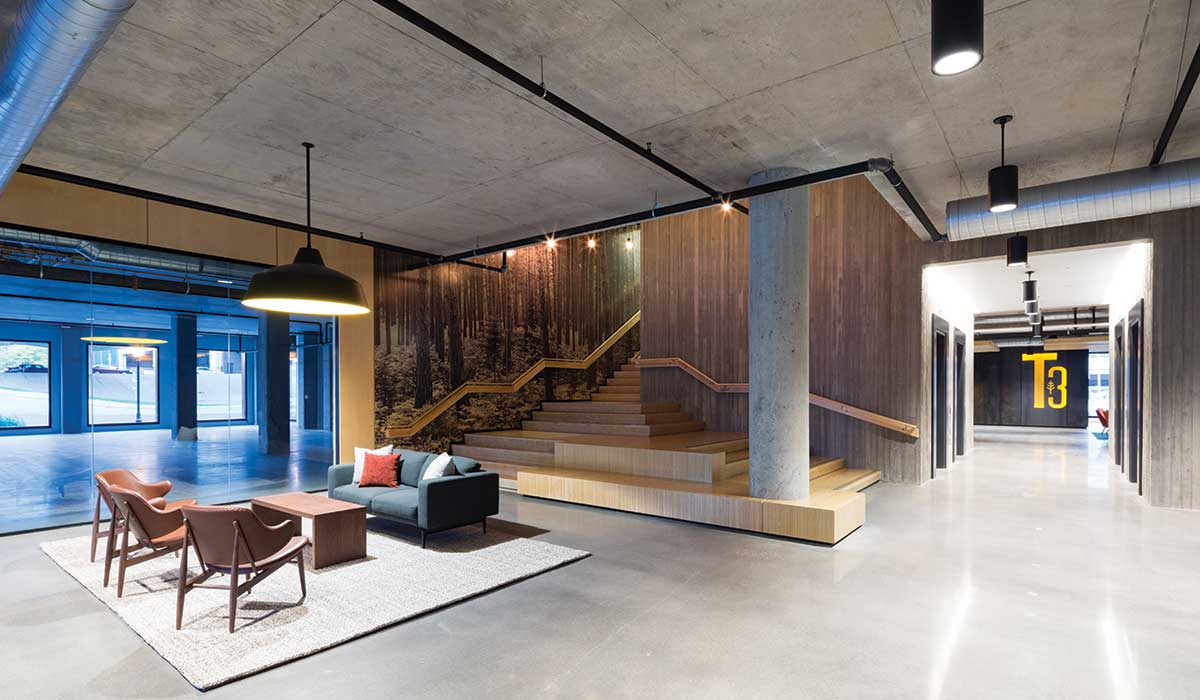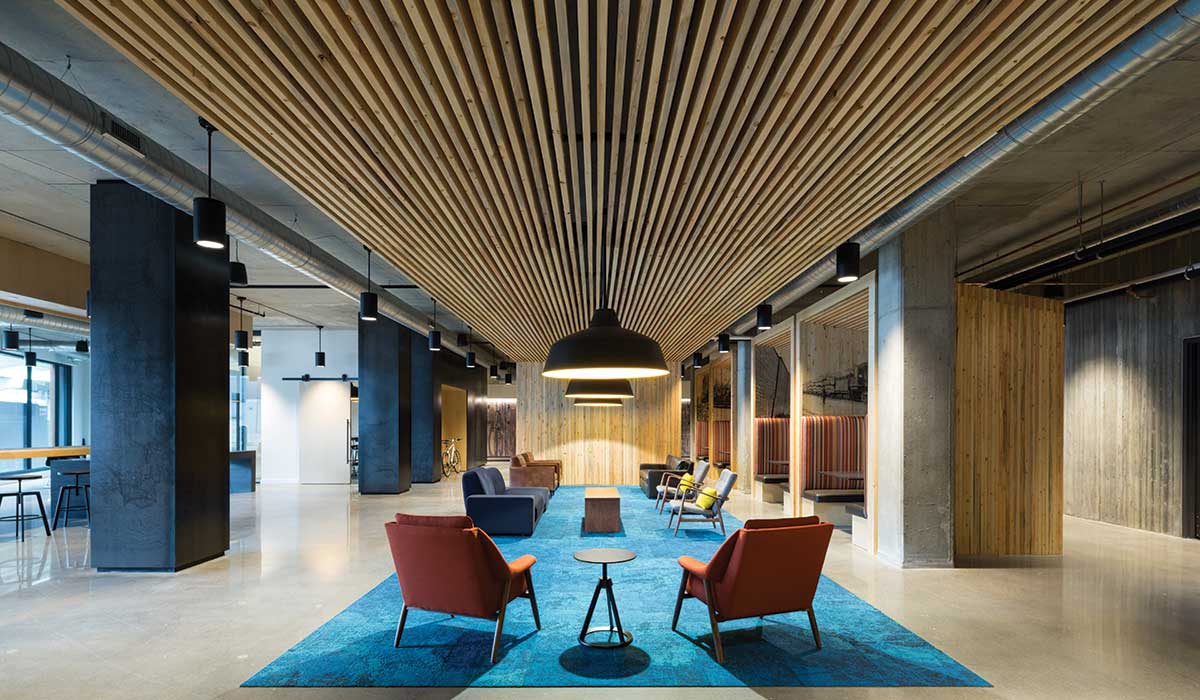
T3 is envisioned as a unique model of a new-office building and an opportunity to offer a modern interpretation of the robust character of historic wood, brick, stone, and steel buildings with the additional benefits of state-of-the-art amenities, environmental performance, and technical capability. The design objective was to build on the character of the past with a modern perspective and provide a warm and inviting environment.

T3, which stands for ‘Timber, Technology, Transit’, offers 224,000 sqft of office and retail space. Over 3,600 cubic meters of exposed mass timber columns, beams, and floor slabs recall the heavy timber construction of the building’s predecessors. T3’s modern technological approach uses engineered wood components (chiefly glulam and nail laminated timber) for the roof, floors, columns and beams, and furniture. A significant amount of the lumber used to fabricate the NLT comes from trees killed by the mountain pine beetle.

As a result of its wood structure, T3 was erected at a speed exceeding conventional steel-framed or concrete buildings. In less than 10 weeks, 180,000 sqft of timber framing went up, averaging 30,000 sqft of floor area installed per week. It is also lighter than comparable steel or concrete structures, reducing the depth and extent of excavation and foundations. Additionally, the embodied carbon in the building’s wood structural system is lower than that found in conventional buildings.

The building’s aesthetic success can also be attributed to the mass timber construction. The texture of the exposed NLT, with small imperfections in the lumber and slight variation in color add to the warmth and character of the new space. Extensive exterior glazing at every level as well as views into the ground level social workspace with wood furniture, booths, and a feature stair, allow the public to experience the building. The use of wood is celebrated throughout the building. The entire timber structure was intentionally left exposed and illuminated with interior lighting directed up to the ceiling.
Photo credit: Ema Peter
Source: v2com















